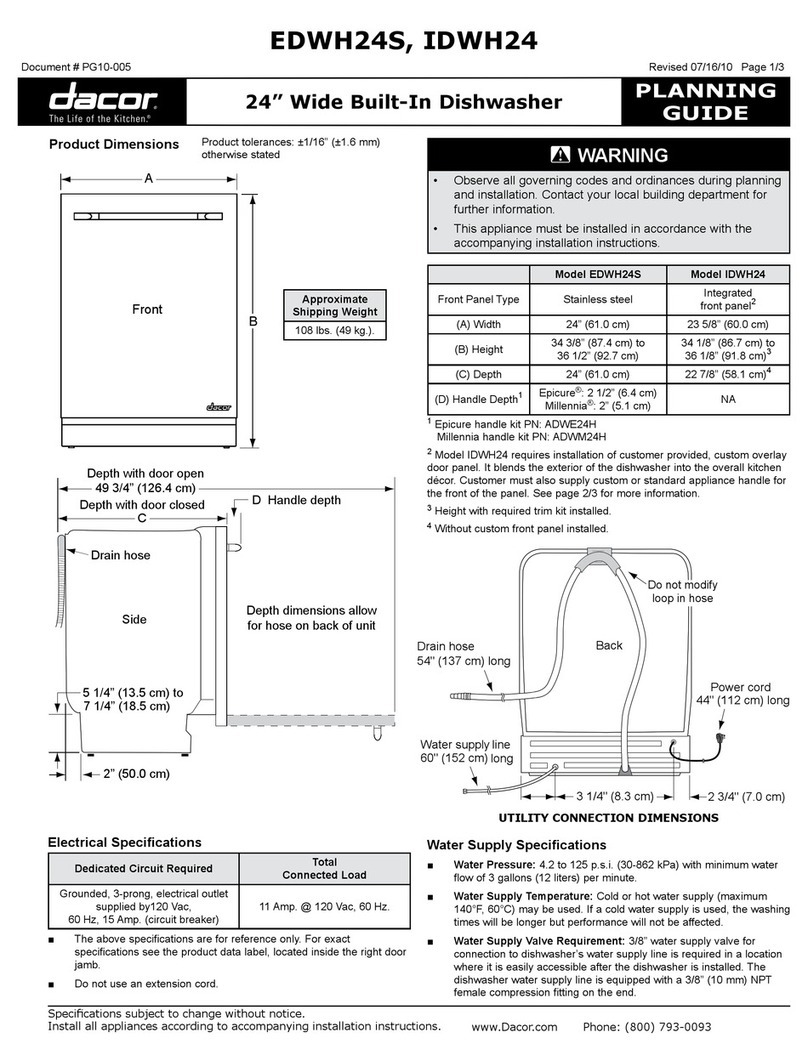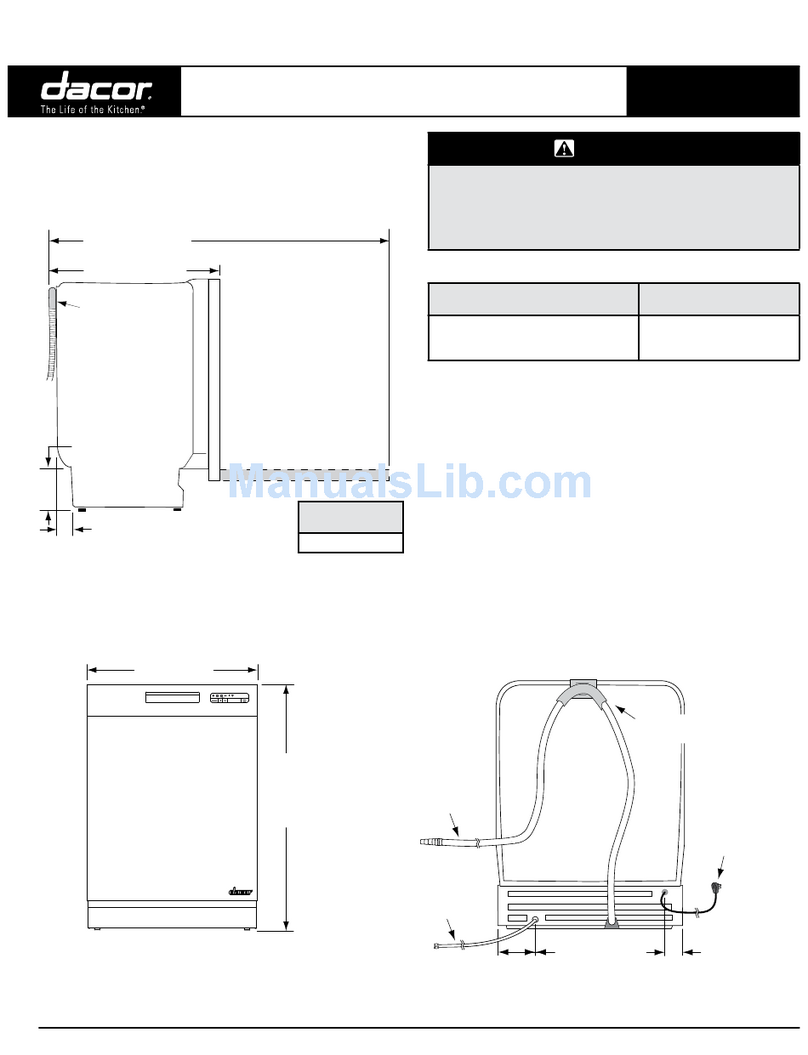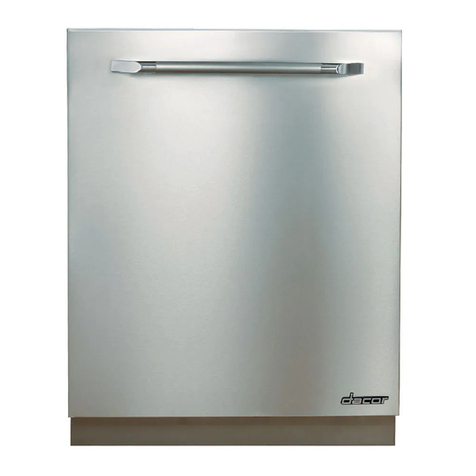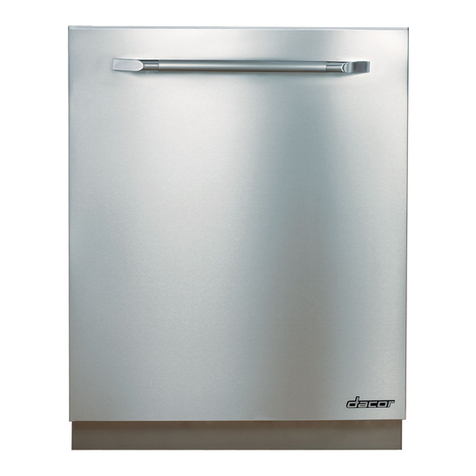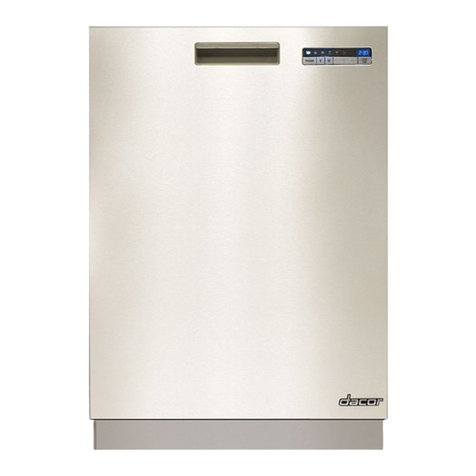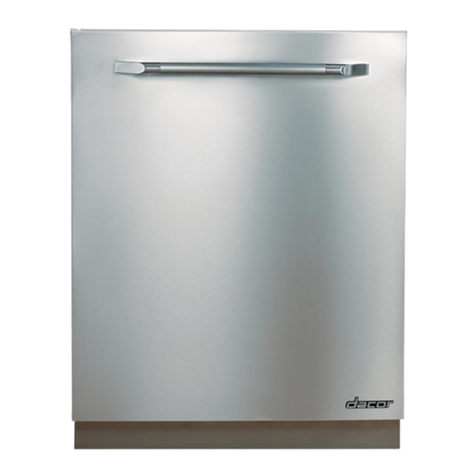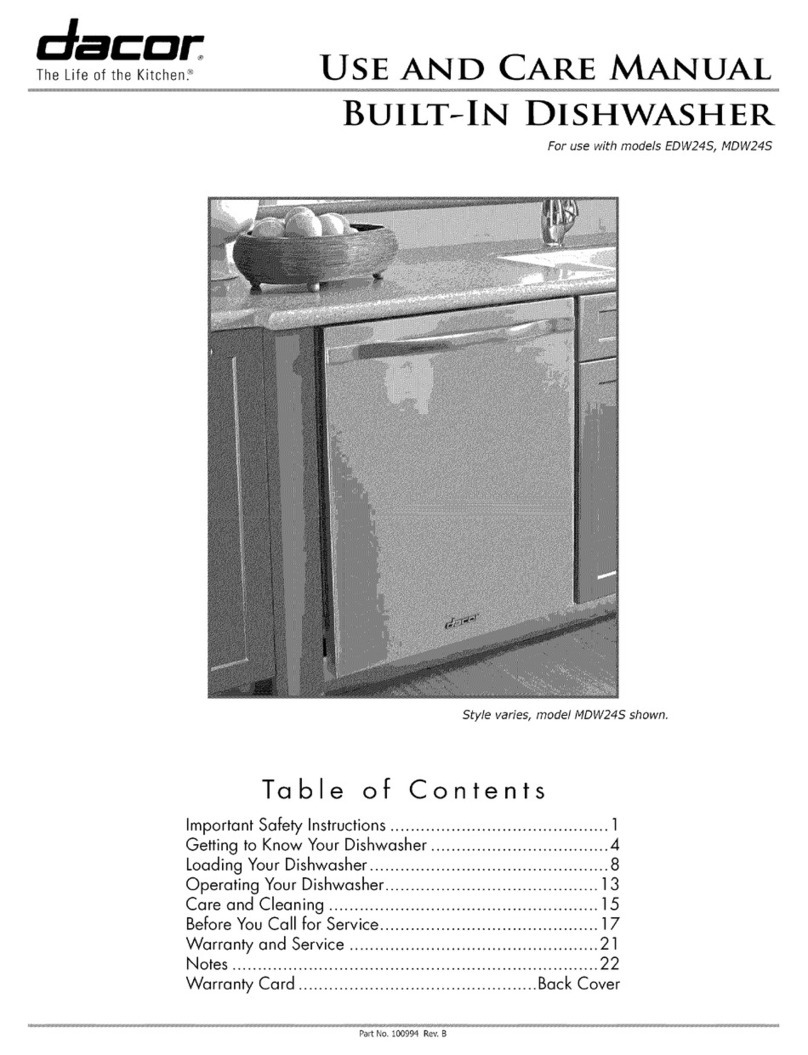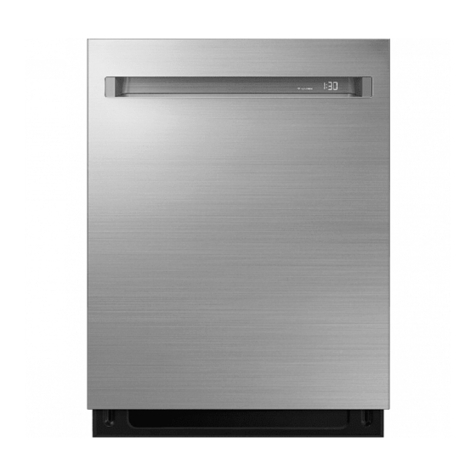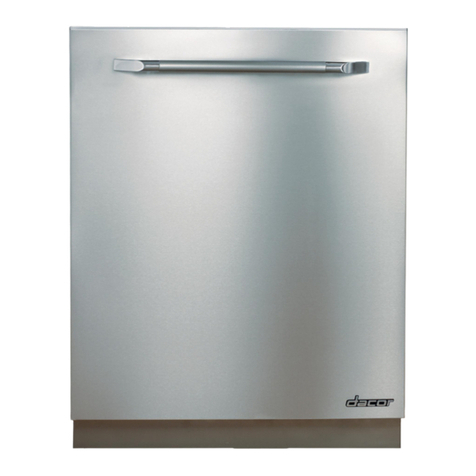Precautions
WARNING - Toreduce the risk of fire, electric shock, serious injury or death when using your appliance, follow
basic safety precautions, including the following:
WARNING
Read all instructions before using the
dishwasher. Use the dishwasher only for its
intended purpose (to wash dishes, flatware,
pots and pans). This appliance is not
intended for commercial use.
•If you receive a damaged product,
immediately contact your dealer or builder.
Do not install or use a damaged appliance.
•The dishwasher must be mounted in a
completely enclosed cabinet.
•Repairs should be performed only by a
qualified technician. Disconnect the power
before servicing.
• Make sure individuals who use the
dishwasher are able to operate it properly.
• Do not leave children alone or unattended
in the area around the dishwasher, even
when it is not in use. Do not allow children
to play with the controls or other parts of the
dishwasher.
• Never allow anyone, including children, to sit,
stand or climb on any part of the dishwasher.
Stepping or sitting on any part of it may result
in tipping, damage, serious injury or death.
• Many surfaces within the dishwasher achieve
high temperatures. Do not touch the interior
surfaces or items inside the dishwasher
during or immediately after use. Exercise
caution when opening the door. Let hot air
and steam escape before looking or reach ng
inside.
•Clean the dishwasher only as instructed in
this manual.
• Do not operate the dishwasher unless all
enclosure panels (guard plate, access panel,
toe kick etc.) are in place.
• Do not store or use combustible materials,
liquids or gases near this or any other
appliance.
• Store all detergents and rinse agents out of
the reach of children.
• Use only detergents and rinse agents
designed for use with a residential
dishwasher.
WARNING
• Do not run the dishwasher when you are out
of the building.
• Under certain conditions hydrogen gas may
be produced in a hot water system that
has not been used for two weeks or more.
Hydrogen gas is explosive. If the hot water
system has not been used for a period of
time, turn on all hot water faucets and let the
water flow for several minutes to release any
accumulated hydrogen gas. Do not smoke or
use an open flame during this process.
CAUTION
Use the dishwasher to wash flatware and
cookware ONLY. Washing other items may
damage or discolor the dishwasher. Wash
only the types of dishes and cooking utensils
indicated in this manual. Take care with
certain materials. Read the Loading Your
Dishwasher section before use.
• To prevent household mold and mildew
damage, Periodically check the inlet and
drain hoses for leaks.
• Turn off the water supply valve if the
appliance will not be used for an extended
period of time.
• When loading items to be washed:
0 Locate sharp items so that they are not
likely to damage the door seal.
0 Load sharp knives with the handles up to
reduce the risk of cut-type injuries.
• Store the dishwasher where the temperature
remains above freezing. Avoid long transport
distances in very cold weather.
• Transport the dishwasher only in the upright
position or laying on its back.
